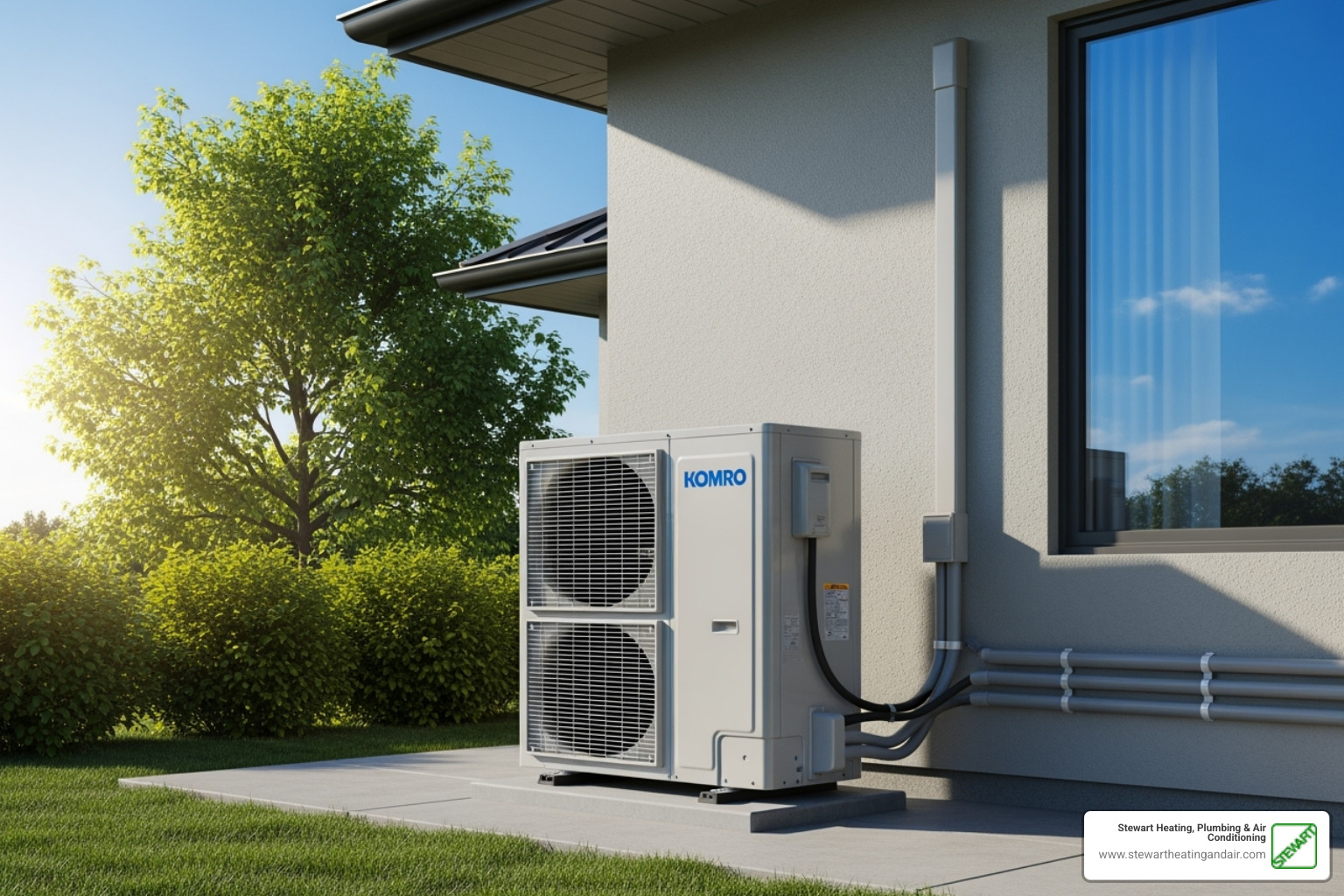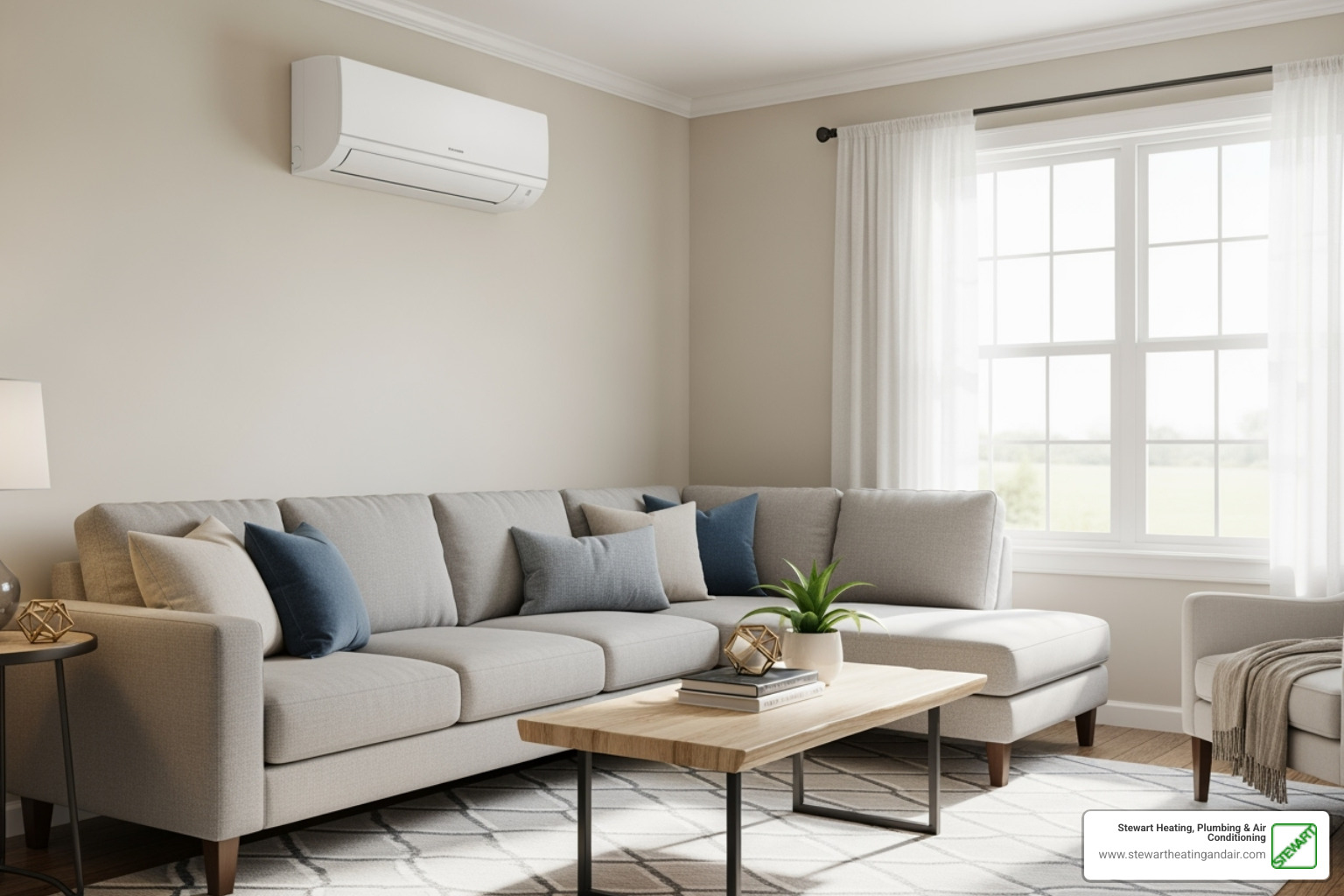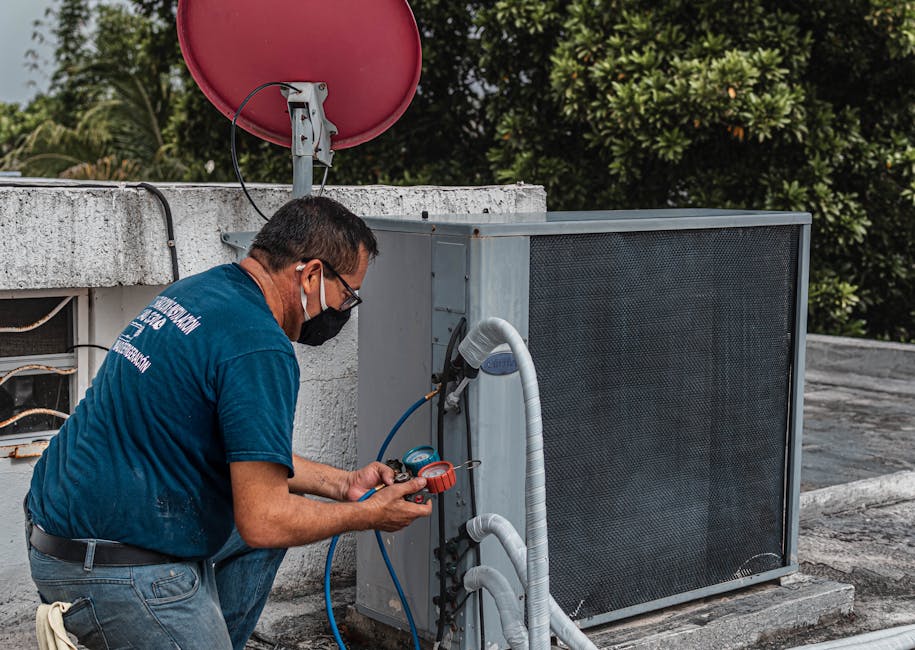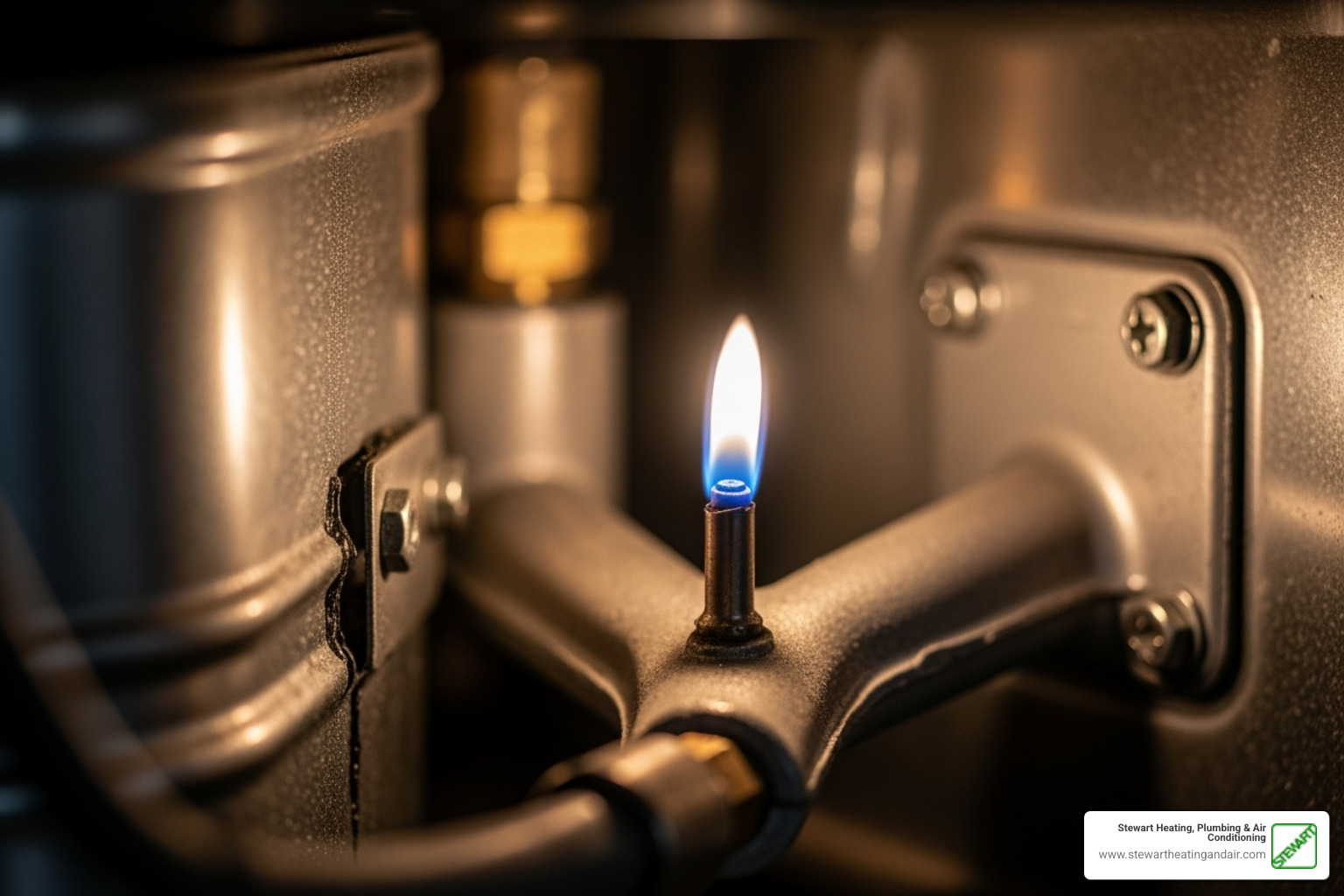
Understanding Your Concord Furnace Pilot Light
When your Concord furnace pilot light goes out, knowing how to relight it safely can save you time and keep your home warm. A pilot light is a small, constant flame that ignites the furnace's main burners when your thermostat calls for heat.
Quick troubleshooting for Concord furnace pilot lights:
- Check for gas smell - If you smell gas, leave immediately and call your gas company
- Locate the gas control knob - Usually found near the bottom of your furnace
- Turn knob to "OFF" - Wait 5 minutes for gas to clear
- Turn to "PILOT" - Press and hold the pilot button while lighting
- Hold for 60 seconds - This heats the thermocouple safety device
- Turn to "ON" - Your furnace should now operate normally
Most Concord furnaces made before 2010 use a standing pilot light, while newer models often have electronic ignition. The pilot light works with a thermocouple, a safety device that shuts off gas flow if the flame is extinguished.
A proper pilot light is a steady blue flame about 1-2 inches tall. If your pilot light frequently goes out, burns yellow, or won't stay lit, it indicates a problem that requires professional attention.
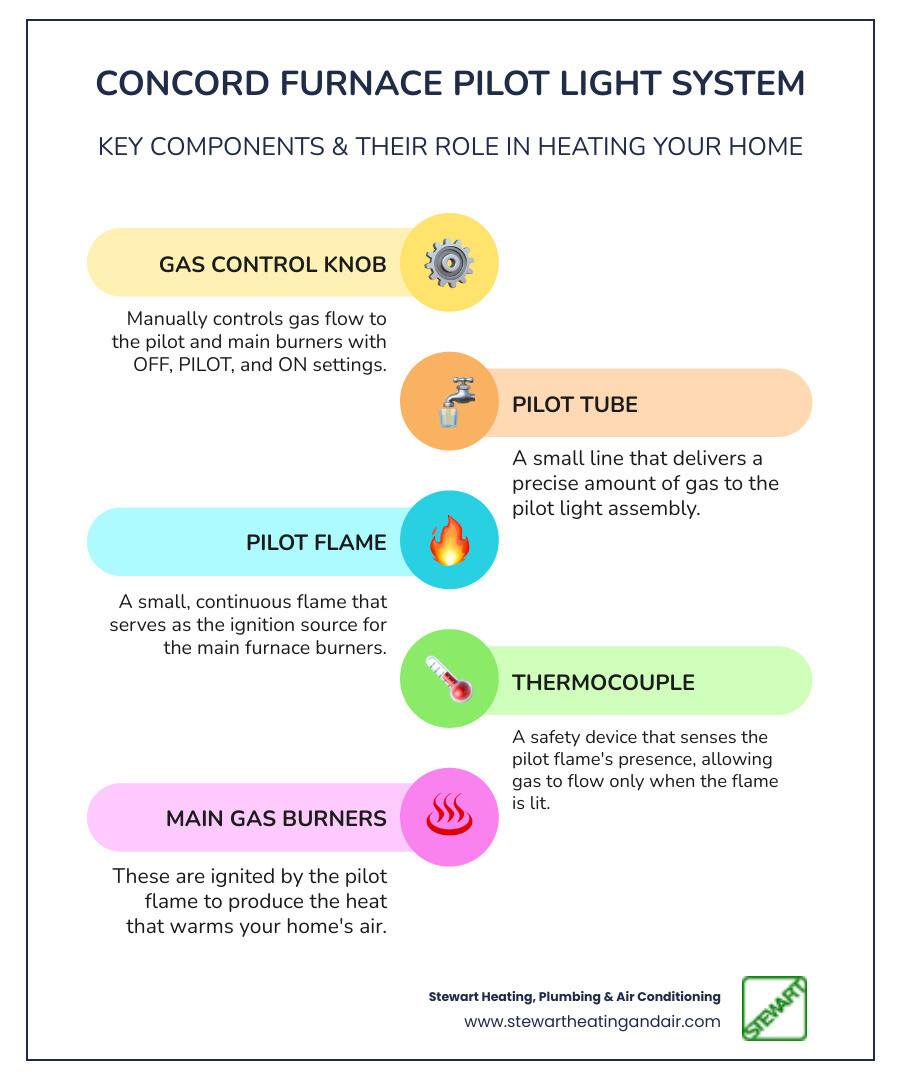
What is a pilot light?
A pilot light is a small, constant flame that ignites the main gas burners in your furnace. When the thermostat calls for heat, the gas valve opens, and the pilot light provides an immediate ignition source for safe and efficient heat generation. This system is crucial for the operation of many furnaces.
Does my Concord furnace have a pilot light?
The ignition system in your Concord furnace depends on its age and model. Models manufactured before 2010 often have a standing pilot light—a small flame that burns continuously. Newer models typically feature more energy-efficient electronic ignition systems, which use a spark or hot surface ignitor to light the gas only when heat is needed.
To determine which system your furnace has, consult your owner's manual. If the manual is unavailable, a visual inspection of the burner area can help; the presence of a small, constant flame indicates a standing pilot light.
Safety First: Critical Precautions Before You Begin
Working with a Concord furnace pilot light requires caution, as mistakes with gas appliances can lead to leaks, fires, or carbon monoxide poisoning. Before you begin, check for the smell of gas. Utility companies add a chemical called mercaptan to natural gas, giving it a distinct rotten egg odor as a safety measure. If you detect this smell, even faintly, stop immediately and follow emergency procedures.
The waiting period is another crucial step. After turning off the gas valve, you must wait at least five minutes before attempting to relight anything to allow any lingering gas to dissipate.
Proper ventilation around your furnace area is essential. You'll also want to turn off the electrical power to your furnace at the circuit breaker or the dedicated furnace switch before you begin.
Here are the essential safety checks you should complete before attempting to relight your pilot:
- Check for gas odors throughout your home and near the furnace
- Ensure good ventilation in the furnace area
- Turn off electrical power to the unit
- Wait the full 5-minute period for gas to clear
- Clear the work area of any flammable materials
What to do if you smell gas
If you smell gas at any point, evacuate your home immediately. Do not use any electrical devices, including light switches or phones, as they can create a spark. Do not try to locate the leak. Once you are safely outside and away from the building, call your gas company's emergency line or 911. Professionals are equipped to handle gas leaks safely. For more safety information, refer to this Gas furnace safety information resource.
Tools and Preparation
Being organized makes the process smoother and safer. You will need a long-reach lighter or matches to keep your hands safely away from the flame area. A good flashlight is essential, as pilot light assemblies are often in dark, hard-to-see corners. Keep your owner's manual nearby, as procedures can vary slightly between Concord furnace models.
Some furnace access panels require a screwdriver for removal, so have one handy. The access panel is typically on the front or side of your furnace. Remove it carefully and set it aside where it won't be a tripping hazard.
How to Safely Relight Your Concord Furnace Pilot Light
With the safety precautions covered and your tools ready, you can now relight your Concord furnace pilot light. Follow each step carefully.
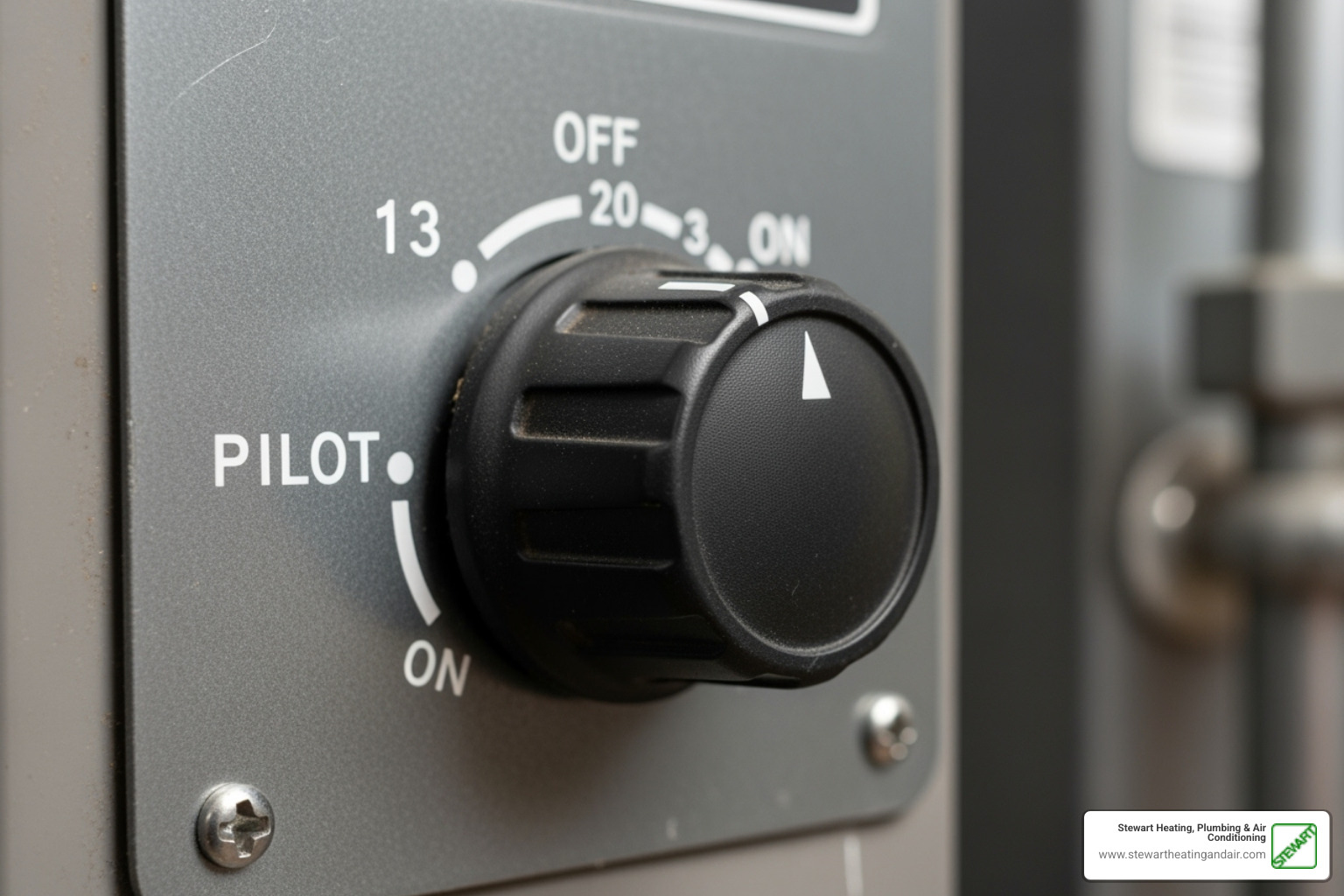
Step 1: Locate the Pilot Assembly and Gas Valve
With the access panel removed, use a flashlight to look for the pilot assembly at the bottom of the furnace. You will find a gas control knob with "OFF," "PILOT," and "ON" settings. Nearby is the pilot assembly, a small metal tube where the flame burns. You will also see the thermocouple, a thin sensor that monitors the pilot flame and acts as a safety device to shut off gas if the flame goes out.
Step 2: Follow the Lighting Instructions
Begin by turning the gas control knob to "OFF" to cut all gas flow. Wait five full minutes for any residual gas to dissipate. Next, turn the gas control knob to "PILOT". On most models, you must press and hold a button in this position to allow gas to flow to the pilot assembly.
While holding the button, use a long-reach lighter or match to ignite the gas at the pilot opening. The pilot flame should ignite. It may take a few tries.
Step 3: Ensure the Pilot Stays Lit
Once the pilot is lit, continue holding the button for a full 60 seconds. This crucial step allows the thermocouple to heat up. A hot thermocouple sends a signal to the gas valve to keep the gas flowing. After 60 seconds, slowly release the button. The pilot flame should remain lit. If it goes out, the thermocouple may need more time to heat, so repeat the lighting process.
Once the pilot stays lit, turn the gas control knob to "ON". This allows gas to flow to the main burners. Finally, replace the access panel, as many furnaces have a safety switch that prevents operation if the panel is off. You can then set your thermostat to the desired temperature to start the furnace.
Troubleshooting Common Pilot Light Problems
If your Concord furnace pilot light won't stay lit after following the relighting steps, it's a sign of an underlying issue. A healthy pilot flame is a steady blue, but a flickering, discolored, or extinguishing flame indicates a problem.

Common Reasons Your Concord Furnace Pilot Light Goes Out
If your Concord furnace pilot light repeatedly goes out, one of these common issues is likely the cause.
- Strong drafts: A draft from a window, door, or air vent can blow out the pilot flame.
- Dirty pilot orifice: The small opening that supplies gas to the pilot can become clogged with dust and debris, resulting in a weak, unreliable flame.
- Clogged pilot tube: The tube that carries gas to the pilot assembly can get blocked, starving the flame of fuel.
- Gas supply interruptions: Work by the utility company or issues with other gas appliances can temporarily interrupt the gas supply.
- Thermocouple issues: This is a very common culprit. If the thermocouple is dirty, failing, or misaligned, it won't detect the flame properly and will shut off the gas as a safety precaution.
Troubleshooting a Concord Furnace Pilot Light That Won't Stay Lit
A pilot light that won't stay lit often points to a faulty thermocouple.
- Dirty thermocouple sensor: Carbon buildup can prevent the sensor from detecting the pilot flame's heat. Gently cleaning the sensor with fine-grit sandpaper may solve the issue.
- Loose gas valve connections: Ensure the connections for the thermocouple and gas valve are secure to allow for proper signal transmission.
- Low gas pressure: Insufficient gas pressure can result in a flame that is too weak to heat the thermocouple. This issue requires professional diagnosis from a gas technician or your utility company.
If these troubleshooting steps don't resolve the problem, or if you are uncomfortable performing them, it's time to call a professional. Our team provides expert Furnace Repair Concord, CA to diagnose and fix stubborn pilot light issues.
What Does the Color of My Pilot Flame Mean?
The color of your pilot flame indicates the health of the combustion process.
- Healthy blue flame: A steady, mostly blue flame, about 1-2 inches tall, indicates a proper gas-to-air mixture and safe, efficient operation.
- Yellow or orange flame: This color is a warning sign of incomplete combustion, which can produce dangerous, odorless carbon monoxide gas. A yellow flame is also not hot enough to properly heat the thermocouple, which can cause the pilot to go out. This can be caused by a dirty pilot orifice or poor ventilation.
If you see a yellow or orange pilot flame, turn off your furnace and call a professional immediately due to the serious carbon monoxide risk. Our technicians can safely diagnose and fix combustion problems.
Preventing Future Pilot Light Issues with Regular Maintenance
Consistent maintenance is the key to ensuring your Concord furnace pilot light remains reliable. Simple habits can prevent frustrating pilot light failures, especially during cold weather. Key maintenance tasks include:
- Regular cleaning of the pilot assembly to prevent dust and debris from clogging gas openings.
- Checking the thermocouple to ensure it is clean and correctly positioned.
- Inspecting gas lines for any signs of wear or damage.
- Changing air filters regularly, as clogged filters can affect system airflow and pressure, indirectly impacting pilot light operation.
These steps are crucial for preventing unexpected furnace shutdowns.
The Role of the Thermocouple
The thermocouple is a critical safety device. When the pilot flame is lit, it heats the thermocouple, which in turn generates a small electrical current. This current signals the gas valve to stay open.
When the pilot flame goes out, the thermocouple cools, the current stops, and the gas valve shuts off, preventing unburned gas from accumulating in your home.
Signs of a failing thermocouple include a pilot light that repeatedly goes out shortly after being lit. If cleaning the thermocouple and checking its position doesn't solve the problem, it likely needs to be replaced.
Annual HVAC Maintenance
The best investment in your Concord furnace pilot light's reliability is annual professional maintenance. During a comprehensive inspection, our technicians examine every component affecting your pilot light's performance.
- Thorough cleaning removes dust, dirt, and carbon buildup that can clog pilot orifices and interfere with proper combustion.
- Professional inspection and testing of your thermocouple ensures this vital safety device is working correctly and is properly positioned.
- Gas line inspection provides peace of mind that your fuel supply is safe and consistent.
Annual maintenance catches small issues before they become big, expensive problems. A dirty pilot orifice that takes minutes to clean during a routine visit could otherwise leave you without heat on the coldest night of the year.
For comprehensive and reliable HVAC Maintenance Concord, CA, we're here to help keep your furnace running smoothly all season long.
Frequently Asked Questions about Your Concord Furnace Pilot Light
We get a lot of calls from homeowners with similar concerns about their pilot lights. Here are answers to the most common questions.
How often should I have to relight my pilot light?
A properly functioning Concord furnace pilot light should burn continuously throughout the heating season and rarely, if ever, need to be relit. If you must relight it frequently, this indicates an underlying problem. Common causes for frequent outages include drafts blowing out the flame, a dirty pilot assembly restricting gas flow, or a failing thermocouple. These recurring issues should be investigated rather than simply relighting the pilot repeatedly.
Can a dirty air filter cause my pilot light to go out?
Yes, a dirty air filter can indirectly cause pilot light issues. A clogged filter restricts airflow, forcing your furnace to work harder and potentially overheat. This can trip the furnace's high-limit switch, causing the entire system to shut down. While this shutdown doesn't directly extinguish the pilot, the constant cycling and system stress can make the pilot more susceptible to going out due to minor issues like drafts. Therefore, a dirty filter is an indirect cause of reduced furnace reliability.
Is a yellow pilot light dangerous?
Yes, a yellow or orange pilot light is a serious safety hazard that requires immediate professional attention. A healthy flame is blue. Yellow or orange flames indicate incomplete combustion, a dangerous condition that produces carbon monoxide, an invisible and odorless toxic gas. The potential for carbon monoxide is too great to ignore or attempt a DIY fix. If your pilot flame is yellow, turn off the furnace and call a professional. We offer 24 Hour Heater Repair Concord, CA because safety issues like this require an urgent response.
Conclusion: Keep Your Concord Home Warm and Safe
Understanding your Concord furnace pilot light is key to staying warm and safe. Always follow safety precautions, especially if you smell gas—evacuate immediately and call for professional help.
While some issues can be resolved with a simple relighting, it's important to recognize when to call for expert assistance. Persistent pilot light problems, yellow or orange flames, or frequent outages are signs of deeper issues that require a professional technician to resolve safely.
At Stewart Heating, Plumbing & Air Conditioning, we have built our reputation in Pittsburg, CA, and Contra Costa County on quality and customer satisfaction. Our experienced team is committed to doing the job right the first time, ensuring your family's comfort and safety.
When your Concord furnace pilot light issues are beyond basic troubleshooting, or you want the peace of mind of professional service, we are here to help. Don't let a pilot light problem leave you in the cold. Contact us for expert heater repair in Concord, CA and we'll restore warmth and comfort to your home.

